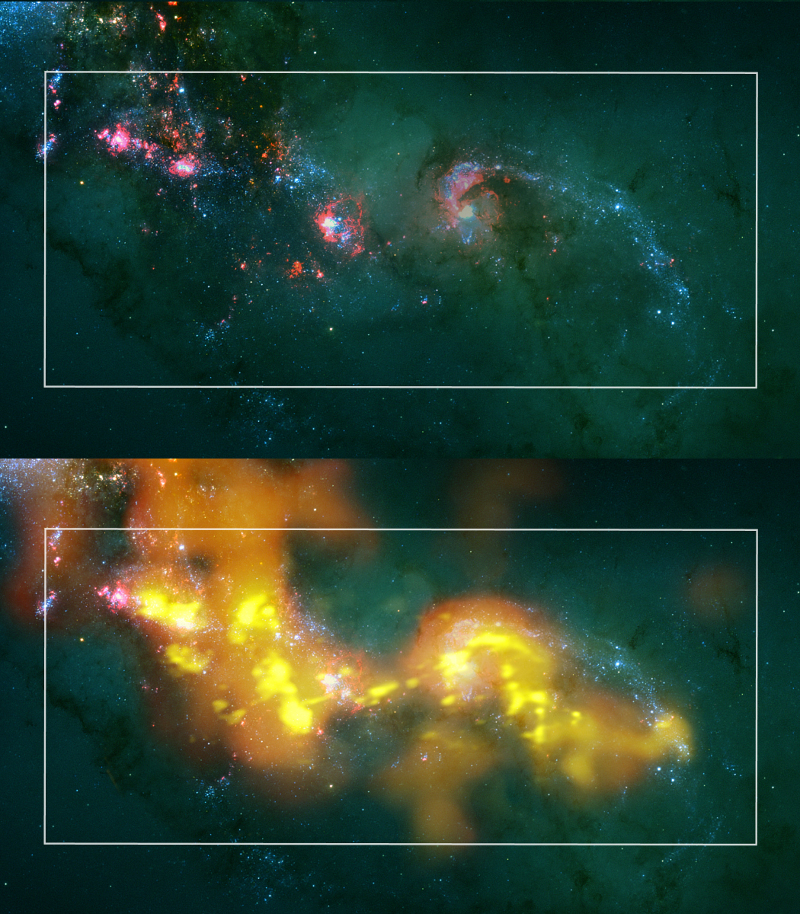Future stars are growing now, concealed in dark clouds into which optical telescopes cannot see. However, ALMA sees through the obscuring dust and traces out these stellar nurseries, many of which show us the continuation of the cloud that has been lit pink by its previous generation of new stars. ALMA’s millimeter/submillimeter wave test views here are represented in orange and yellows to contrast with the previous starbirth generations. ((NRAO/AUI/NSF); ALMA (ESO/NAOJ/NRAO); HST (NASA, ESA, and B. Whitmore (STScI)).)
Home Future stars are growing now, concealed in dark clouds into which optical telescopes cannot see. However, ALMA sees through the obscuring dust and traces out these stellar nurseries, many of which show us the continuation of the cloud that has been lit pink by its previous generation of new stars. ALMA’s millimeter/submillimeter wave test views here are represented in orange and yellows to contrast with the previous starbirth generations. ((NRAO/AUI/NSF); ALMA (ESO/NAOJ/NRAO); HST (NASA, ESA, and B. Whitmore (STScI)).) Future stars are growing now, concealed in dark clouds into which optical telescopes cannot see. However, ALMA sees through the obscuring dust and traces out these stellar nurseries, many of which show us the continuation of the cloud that has been lit pink by its previous generation of new stars. ALMA's millimeter/submillimeter wave test views here are represented in orange and yellows to contrast with the previous starbirth generations. ((NRAO/AUI/NSF); ALMA (ESO/NAOJ/NRAO); HST (NASA, ESA, and B. Whitmore (STScI)).)
Future stars are growing now, concealed in dark clouds into which optical telescopes cannot see. However, ALMA sees through the obscuring dust and traces out these stellar nurseries, many of which show us the continuation of the cloud that has been lit pink by its previous generation of new stars. ALMA’s millimeter/submillimeter wave test views here are represented in orange and yellows to contrast with the previous starbirth generations. ((NRAO/AUI/NSF); ALMA (ESO/NAOJ/NRAO); HST (NASA, ESA, and B. Whitmore (STScI)).)




